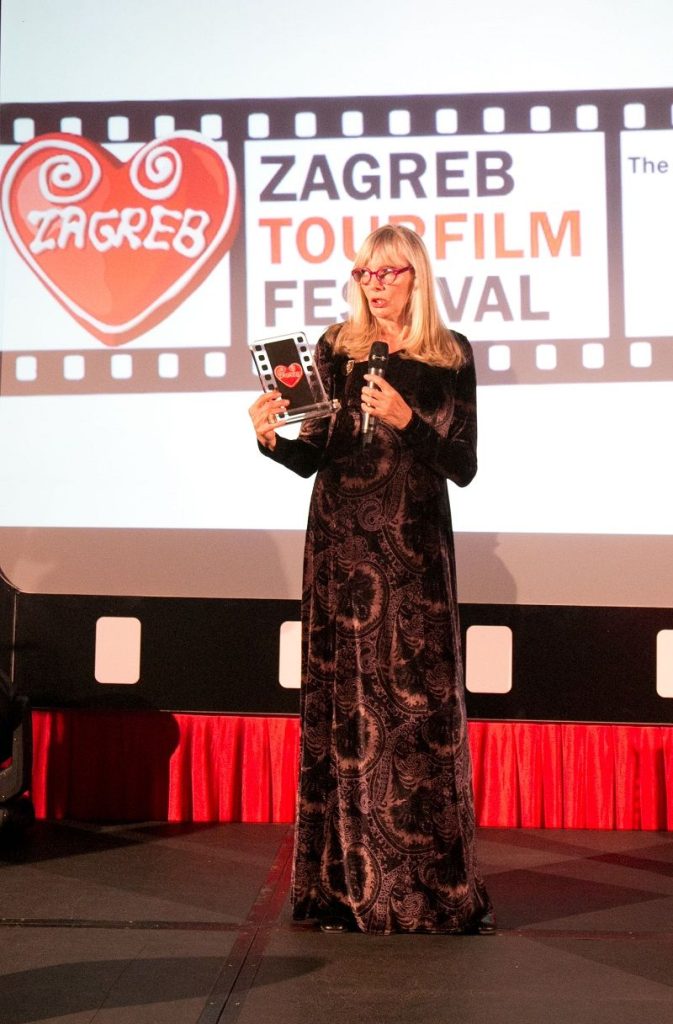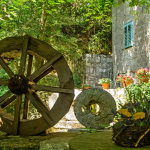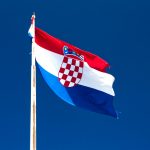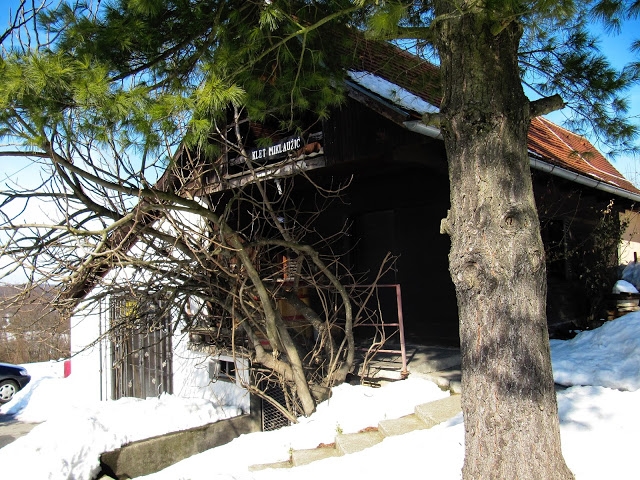
“It is hard to comprehend a litre of milk can do what Singenta does with billions of dollars in their budget,” says the producer from the Croatian Highlands
When we first spoke five years ago, Marko Miklaužić from Popovača in the Croatian Highlands region east of Zagreb stubbornly insisted on his claim that wine is – fashion. And confidently asserted that Škrlet will in coming decade become the most important continental white variety in Croatia.
“I am not exaggerating, I am certain it will quickly hold the role of a people’s, honest and ecologically produced wine. And Škrlet will spread due to fashion. People want something new to eat and drink! Wine is fashion, like clothes, cars, shoes etc. Whatever we say about Chardonnay, it’s a matter of time when it will disappear. And it’s already started to. Same with Graševina, a variety nearing its end. I feel bad for Graševina, but it’s past its prime, everyone remembers Kutjevo company and grabs their head. But no one remembers Adžić, a wonderful producer, Krauthaker, the soul of Croatian winemaking, Enjingi, pioneer of ecological production… Unfortunately, the first association of Graševina today is not positive,” is what Marko Miklaužić said back then.
Today, Marko hasn’t changed his position. He only wanted to slightly correct his view of Graševina.
“I actually expected the wine fashion on the Croatian wine scene to change faster, but when the state stopped investing in agriculture and imposed huge parafiscal burdens and taxes a huge spark was extinguished created through the subsidizing of new vineyards, where I saw the opportunity for Škrlet. What happened, however, was the planting of large and too large surfaces of Graševina in cooperative sense with very little serious producers, with many Slavonians producing grapes for sale of low quality, reducing the reputation of Graševina as queen of continental white wines. The bearings seems to be lost, those who sell grapes aim at five kilograms per vine, part of the high quality producers aim at wines with high alcohols which are not sold, as is the case with Belje, Ilok, Erdut… However, Graševina has another large advantage, the coefficient of usability gained by multiplying the amount of must with the sugar percentage, the highest. With Graševina the coefficient if 10, in Traminer only 4. So, Graševina is a two and a half times more profitable variety than certain fine varieties like Sauvignon, Traminer, Muscats, all those aromatic varieties that give less grapes. Around here, Graševina seems to be good only in good hands, where it shines, while with grape resellers it is an average uninteresting commodity.”
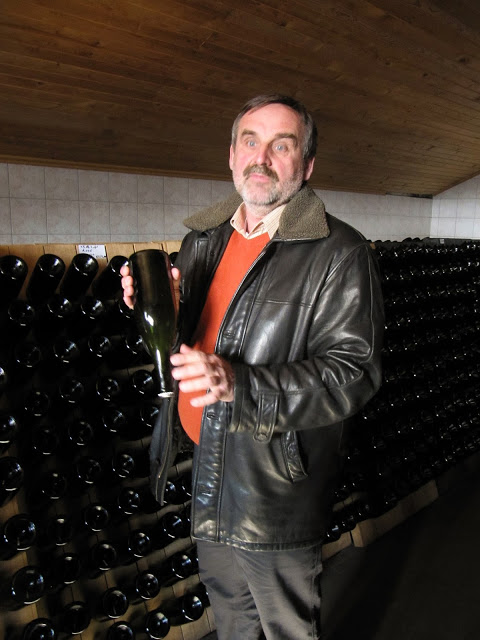
This respected Moslavina winemaker, son of famous Lujo Miklaužić, late director of Moslavina Wine Region and founder of Feravino winery from Feričanci, who began the first revitalisation of Škrlet in the 1970s to detach it from oblivion, decided on Škrlet as it “doesn’t need perfect care, regular fertilization, digging or similar agro-technical actions.”
“Škrlet did not come from an incubator like Chardonnay. It’s been here 2.000 years and it doesn’t care if it rains in harvest – it won’t rot, doesn’t care if there is frost in May – it won’t freeze, is not interested when the infections are strongest – it has large and sparse grape clusters, grapes don’t touch so all droplet fungal diseases are not transferred. Compared to Graševina, whose entire cluster is lost if one grape falls ill, it’s a huge advantage,” says Marko.
Škrlet is love at first sight, claims Marko Miklaužić describing his pride as “simple, light, fresh, fruity wine, almost semi-Muscat if properly vinified.” In bad years, such as 2010, Škrlet turns into “a light wine” with sugars at 16-17, with only 10.5 percent alcohols.
Although Škrlet is currently found only in the area between Kutina and Popovača, there is a total of 100 hectares of vineyards, the geographically protected origin type on 36 hectares and is according to this data, the rarest protected variety in Croatia. Marko feels the market has recognised Škrlet as a “global rare variety which has no competition in this part of Europe.”
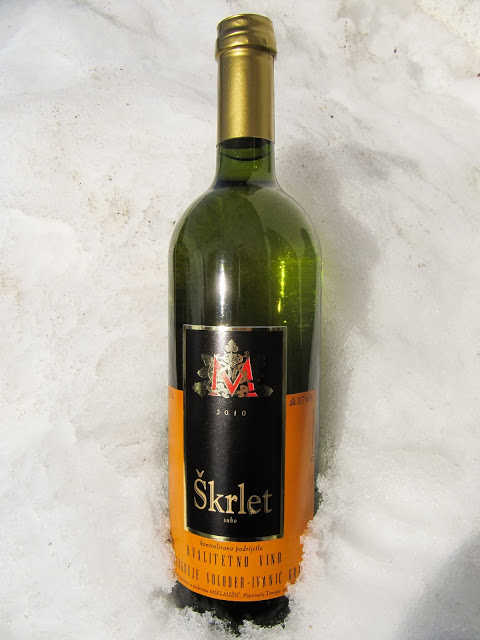
“We are lucky to be a heterogeneous terrain with many young producers, two or three of us old guys and some producers on the Petrinja-Sisak side on slopes above Letovanić. Several types of producers formed. There is a specialist, Ivan Kosovec, who dove into biodynamics with Škrlet production and in a way opened are eyes to the huge potential of the variety in ecological sense. Then there is an entire line of small producers who make wine for domestic use, possibly 1 litre packaging for taverns and three producers with constant quality in bottles and they achieve the best ratio of rating and price on the market. If I had a million litres of Škrlet I would sell it by the end of the year, I guarantee that, as the market likes new things, especially ecologically aware and new!”
Since 2015 Marko Miklaužić can boast to be among the rare, if not only Croatian winemaker, who sprays his vineyards with – milk! He played first with pure milk and then last year, when the recommended ecological substances from merchants failed, he used milk to completely protect 11 hectares of vineyards. And it was these plantations of Chardonnay and Pinot Nero, along with Škrlet, that survived the heavy frost.
“I have an even better example of Dinko Saić, my subcontractor in Škrlet production, who last year went through the entire assortment of protection from the largest global companies, Monsanto to Bayer and Singente… But his Cabernet Sauvignon and Merlot were completely infected with powdery mildew. The man came to me in despair and I gifted him 100 litres of milk. As he couldn’t find milk anywhere either. You see, the situation today is that you can’t buy a large amount of fresh cow milk, 90 percent of milk producers in our area gave up on production. I get mine from Čazma, from a man who has 500 cows and makes 12 to 15 thousand litres of milk per day and is the largest producer in western Croatia. So Vinko listened to my advice and sprayed his vineyards only once with milk and was completely free from powdery mildew! This is not my story, his case only confirmed the practice which has long existed with ecological producers of grapes. I am in ecological production for seven years and by constantly exchanging information over the internet I joined the circle of biodynamics, a heavy category, as it includes a life philosophy in grape production. Their entire system must be subject to ecological production, cows and ploughing, while I extracted only the observation that milk is a good thing in protection from fungal diseases. Then I remembered my grandmother in Kutjevo used to spray milk on tomatoes. I had no idea until the age of 55 what she was doing, while in fact she introduced competitive cultures which eliminate each other. Translated – bacteria eliminate fungus. It is hard to comprehend a litre of milk can do what Singenta does with billions of dollars in their budget. It seems impossible, while in fact we have all been seduced with the achievements of the chemical industry and we have forgotten the postulates of natural production, in function until the Second World War or until downy and powdery mildew appeared!”
Marko likes to say he turned down all “wine shops and chain stores” and the Škrlet lovers come exclusively to his cellar to buy wine.
“I wanted to make Škrlet into a wine Volkswagen and sell it at a normal price so anyone can taste it, not sell it to supermarket chains for seven kuna while they resell it for 37 kuna. I don’t agree to such hoaxes,” explained Marko who is stubbornly consistent in producing and selling only fresh wines.
“I am seen as an old freak they want to sell on the story of old aged wine? I tell them all that a ham might be better when aged. You see, God allowed grapes to yield each year and for this reason, without any conservatives, storage, poisoning…, wine should be consumed while fresh, young and fruity. And the same next year. I twisted the story around and as you can see, it all functions. With me there is not “1945 harvest” or “1987 harvest.” It’s a story invented by the Germans and French. Once they couldn’t sell wine they began to claim win of 18 years is better than that of a year or two! Such wines I could sell, but never, never would I buy them. I believe this is how my growing buyers think,” says Marko Miklaužić.
At the recent Zagreb Advent, Marko and his son Lovro had a special booth on Zrinjevac, while his peculiarities included Glamour, a sparkling wine from Moslavac (Šipon or Furmint), the only one currently produced in Croatia from this variety.
“I believe there were maybe a total of two sparklings from Moslavac before, but they didn’t stick around. There was somebody in Međimurje and I can’t find him anymore, I presume they quit… I have spent three years producing sparklings from Moslavac and it seems aging gives it quality and improves with time considerably, from a rough rural wine, Moslavac becomes a refined sparkling wine with all the characteristics of a serious sparkling wine. It gets better and better, is tamed, without losing the acidity typical of Moslavac, I would say worthy of the name Glamour, as I named it,” boasts Marko.
For the original and more from Vinske Priče blog on wine, click here.

